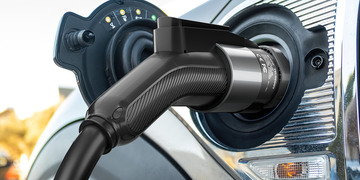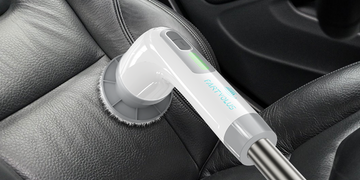What is the difference between Type 1 and Type 2 charger? Additionally, Type 1 chargers offer slower charging rates (3kW to 7.4kW) due to their single-phase electricity supply limitation, whereas Type 2 chargers support both single-phase and three-phase charging, providing greater flexibility with speeds up to 22kW AC at home and 43kW at public stations.
Charging infrastructure is a critical aspect of the EV ecosystem, and understanding the differences between charging connectors is essential for EV owners. In this article, we explore the distinctions between Type 1 and Type 2 chargers, shedding light on their specifications and applications.
Type 1 Charger:
Type 1, also known as SAE J1772, is a standard charging connector predominantly used in North America and some parts of Asia. This charger features a single-phase AC charging system with a maximum charging power typically ranging from 3.6 kW to 7.2 kW. Type 1 connectors have five pins, including two power pins, a ground pin, and two communication pins for data exchange between the vehicle and the charging station.
Type 1 chargers are often found in residential settings, workplaces, and public charging stations in regions where this standard is prevalent. However, as the EV market expands globally, Type 1 connectors are gradually being replaced by Type 2 connectors due to the latter's enhanced capabilities.
Type 2 Charger:
Type 2, or IEC 62196, is a more versatile charging standard widely adopted in Europe and becoming increasingly popular in other parts of the world. Unlike Type 1, Type 2 connectors support both single-phase and three-phase AC charging, making them suitable for a broader range of charging scenarios. The charging power for Type 2 connectors can vary from 3.7 kW to 22 kW for single-phase, and up to 43 kW for three-phase charging.
Type 2 chargers come with seven pins, accommodating the additional phases and providing more advanced communication capabilities between the EV and the charging station. This standard supports faster charging rates, making it a preferred choice for public charging infrastructure and high-powered EVs.
Compatibility and Global Trends:
While Type 1 and Type 2 chargers are distinct, several EV manufacturers produce vehicles with dual connectors, allowing compatibility with both standards. This dual compatibility is particularly beneficial for users who travel internationally or reside in regions with mixed charging infrastructure.
In recent years, there has been a global shift towards the Type 2 standard, even in regions where Type 1 was initially dominant. Governments, industries, and charging infrastructure providers are aligning with the Type 2 standard to facilitate interoperability and future-proof charging networks.
Understanding the differences between Type 1 and Type 2 chargers is crucial for EV owners, especially as the global EV market continues to evolve. While Type 1 chargers are prevalent in certain regions, the versatility and higher power capabilities of Type 2 chargers are driving a shift towards this standard worldwide.

What are the differences between Type 1 and Type 2 EV charging?
There are several differences between Type 1 and Type 2 EV chargers:
1. Design
The starkest and most obvious difference between Type 1 and Type 2 EV chargers is the design of the connector. Type 1 EV connectors have a five-pin design, usually taking on a circular design. In comparison, Type 2 EV connectors have seven pins.
2. Charging rate and electricity supply
Unfortunately, Type 1 EV chargers allow slower charging rates to Type 2, ranging from 3.6kW to 7.4kW, as they are limited to a single-phase electricity supply. This means if you invest in a Type 1 EV charger, you won’t be able to charge faster than 7kW power rate (the highest rate you can charge with a single-phase electricity supply).
On the other hand, Type 2 EV chargers can handle both single-phase and three-phase charging, offering greater flexibility in charging speeds and power levels. This makes them suitable for both residential and public charging stations as they can reach the high charging rate of 22kW Alternating Current (AC) at home and up to 43kW at certain public chargers.
Please note that to take advantage of the highest charging rates, you won’t be using your Type 1 or Type 2 connector. Instead, you will be using your CCS or CHAdeMO connectors.
3. Regional adoption:
Type 1 electric vehicles are more commonly found in electric cars in North America and Asia rather than in Europe, meaning it’s unlikely you’ll find public chargers offering Type 1 charging.
Type 2 connectors, on the other hand, have become the standard in Europe and are increasingly being adopted in other parts of the world, even in regions where Type 1 connectors were historically used.
In fact, the EU implemented legislation in 2017 that stated all public charging stations must be Type 2, which led to an increase in European car manufacturers only producing Type 2 electric vehicles. So, when you’re out and about in the UK, it’s likely you’ll encounter a Type 2 EV charger.
4. Locking
Because of its design, you can’t lock a Type 1 EV charging cable into place, unlike a Type 2 EV cable that has locking pins, offering an additional layer of protection. Although, there are alternative ways to protect your EV charger and its cable.
What is the difference between Type 1 and Type 2 charger? Understanding the differences between Type 1 and Type 2 chargers is crucial for EV owners, especially as the global EV market continues to evolve. While Type 1 chargers are prevalent in certain regions, the versatility and higher power capabilities of Type 2 chargers are driving a shift towards this standard worldwide.





